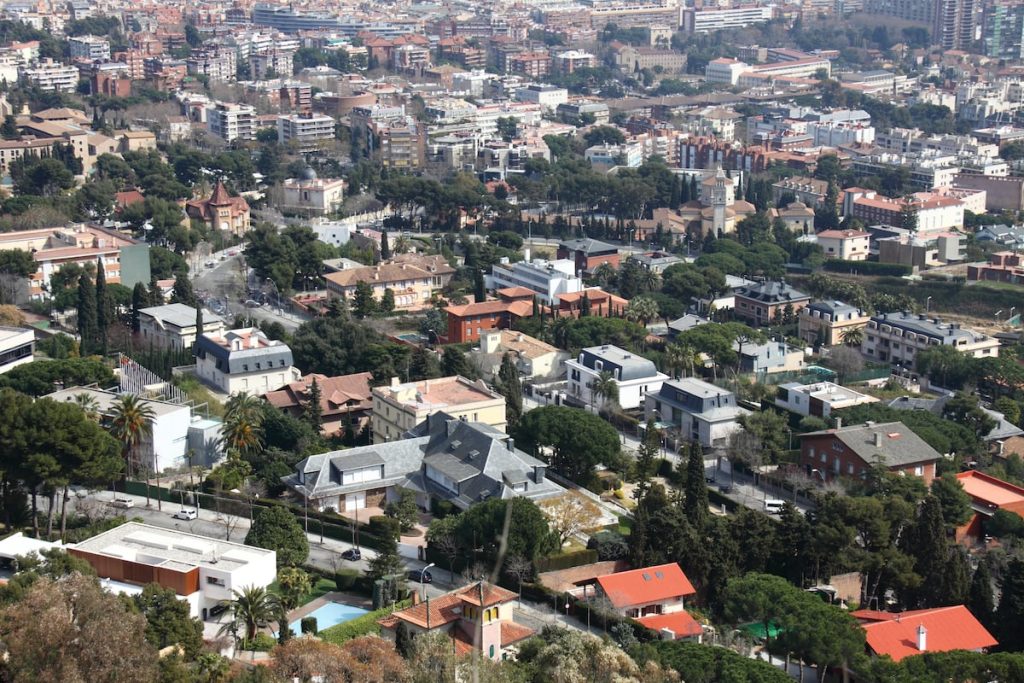The rental price map of Spain shows two parallel universes, not only in terms of the value of the apartments. The five most expensive districts or neighborhoods, such as Pedralbes in Barcelona or Recoletos in Madrid, have average rents of around 1,600 euros per month, while in neighborhoods considered to have lower incomes, such as Pajarillos Bajos in Valladolid or Cañadas de San Pedro in Murcia, the average monthly rent barely reaches 373 euros. This difference of almost 1,300 euros per month defines a contrast that impacts the daily lives of thousands of families, as the amount required to live in these elite neighborhoods equals an average salary in lower-income areas, according to the latest edition of urban indicators published by the National Institute of Statistics (INE) for the year 2022.
The average annual net income of households in the five most expensive and most accessible districts also highlights the economic distance between families living in these different neighborhoods. In the five most exclusive neighborhoods for renting an apartment, families reported an average annual net income of around 102,000 euros, while in the cheapest districts, the average dropped to 28,000 euros. This means that households in the districts with the most expensive rents have, on average, 75,000 euros more per year than families in the cheaper areas, while the difference in rent between one place and another represents an average extra expense of 15,600 euros per year. Madrid and Barcelona, the two largest metropolitan areas, concentrate the 60 neighborhoods with the highest average monthly rental expenses. In contrast, the lowest ones are located in Murcia and Alicante. The data is based on rental income information from annual income tax returns and only considers the territory under common tax regime; that is, it does not include the Basque Country and Navarra.
The neighborhoods with the highest average annual net income per inhabitant in cities with more than 250,000 inhabitants in 2022 were El Viso (43,575 euros), Recoletos (40,956) and Piovera (39,164), all three in Madrid. On the other hand, the lowest incomes were found in Sevilla, in Los Pajaritos and Amate, with just over 6,700 euros, and the Juan XXIII neighborhood in Alicante, with 7,107 euros. The difference in these areas is very unequal, even when compared to the national average income, which according to the 2022 salary structure survey was 26,948.87 euros annually per worker.
In addition to income and rental costs, the distribution of the population marks another significant difference. In districts with lower incomes, more population lives, with an average of 24,000 people compared to about 15,000 people in higher-income districts. This difference affects infrastructure and resources, as neighborhoods with higher population density often face more limitations in space and resources to meet the needs of their residents. As for available space in housing, the differences between high and low-income districts are also reflected in the square meters of the rented apartments. In the more privileged neighborhoods, such as El Viso in Madrid and Pedralbes in Barcelona, homes often exceed 100 square meters. Meanwhile, in lower-income neighborhoods, properties tend to be considerably smaller, around 70 or 80 square meters.
The huge gap between cities
Of the 126 cities studied by the statistical center, the three with the highest average monthly rental expenses in 2022 were Pozuelo de Alarcón and Majadahonda, in Madrid, and Sant Cugat del Vallès, in Catalonia. All three exceed or approach an average of 1,000 euros. On the other hand, Ponferrada (León), Ferrol (A Coruña) and Alcoy (Alicante) recorded the lowest average monthly rental expenses for a primary residence, around 350 euros per month. Once again, this gap can be extrapolated to other economic conditions, such as the unemployment rate, which in 2022 did not reach 6% in Pozuelo, while it was over 15% in Alcoy. However, cities in Andalucía have the highest unemployment rates. La Línea de la Concepción, in the south of the province of Cádiz, had almost 30% of its working-age population unemployed, according to the INE. It is followed by Ceuta, Linares (Jaén), Jerez de la Frontera (Cádiz), Granada, and Algeciras (Cádiz), all with rates above 23%.
The INE’s Urban Indicators report is a clear reflection of the profound economic inequalities between urban areas. From differences in income and rental costs to gaps in population density, the figures confirm the existence of very different realities. Salary variations and the impact of economic activity on incomes complete a panorama that changes little each year, especially on the side of the most affluent neighborhoods. With minor position changes, the list of the top 10 districts with the highest income per inhabitant in 2022 is identical to the previous year.


